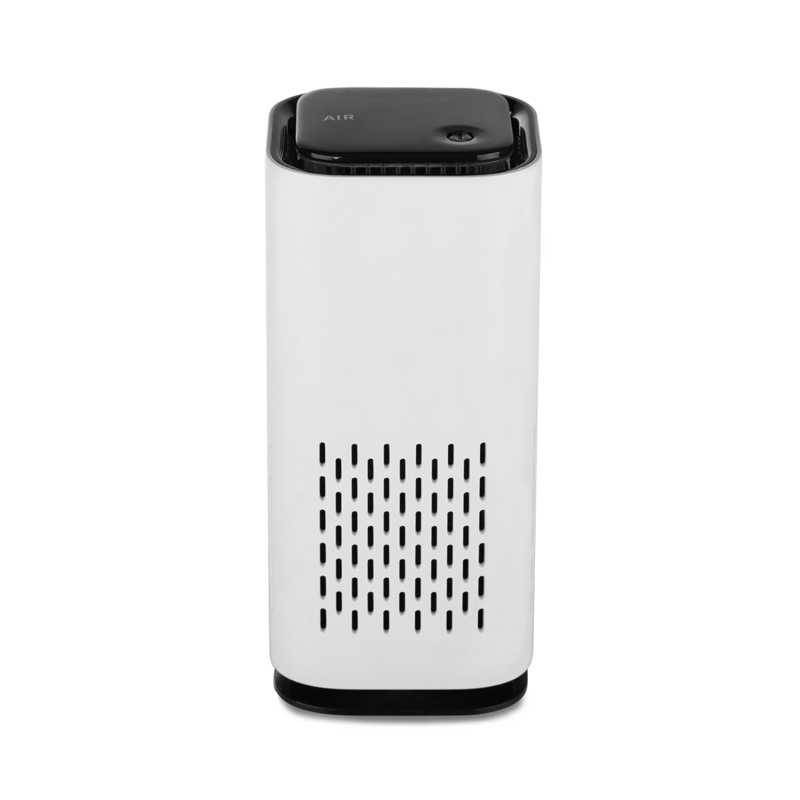CREATIVITY CHANGES YOUR LIFE
 Tel: +86 0755-84870739
Tel: +86 0755-84870739
 Email: info@nexhc.com
Email: info@nexhc.com
CREATIVITY CHANGES YOUR LIFE
 Tel: +86 0755-84870739
Tel: +86 0755-84870739
 Email: info@nexhc.com
Email: info@nexhc.com
Company news | Industry news | Exhibitions and events | Optimization dedicated | aromatherapy diffuser |
source:Air purifier Merchant release time:2021-10-21 Hits: Popular:aromatherapy diffuser direct sales
Analysis on the development history of air purifiers
Air purifiers, also known as "air cleaners", air purifiers, and purifiers, refer to decoration pollution that can absorb, decompose or transform various air pollutants (generally including PM2.5, dust, pollen, peculiar smell, formaldehyde, etc.) , Bacteria, allergens, etc.), products that effectively improve air cleanliness, are mainly divided into household, commercial, industrial, and building.
There are many different technologies and media in air purifiers, which enable it to provide users with clean and safe air. Commonly used air purification technologies include: adsorption technology, negative (positive) ion technology, catalytic technology, photocatalyst technology, superstructure photomineralization technology, HEPA high-efficiency filtration technology, electrostatic dust collection technology, etc.; material technologies mainly include: photocatalyst, activated carbon, Synthetic fiber, HEPA high-efficiency material, negative ion generator, etc. Most of the existing air purifiers are of composite type, that is, multiple purification technologies and material media are used at the same time.

In 1823, John and Charles Dean invented a new type of smoke protection device that allows firefighters to avoid smoke when fighting fires.
In 1854, a man named Johns Tenhouse made new progress based on the invention of his predecessors: after several attempts, he learned that adding charcoal to the air filter can filter out harmful and toxic gases from the air. .
During World War II, the US government began to conduct research on radioactive materials. They needed to develop a way to filter out all harmful particles in order to keep the air clean so that scientists could breathe, so HEPA filters came into being.
In the 1950s and 1960s, HEPA filters were once very popular. HEPA is a filtration standard, that is, it has a filtration efficiency of more than 99.97% for 0.3 micron particles. It requires a single filtration efficiency. In the air purifier, the air resistance of the filter that meets the HEPA standard is too high to be suitable.
In the 1980s, the focus of air purification has shifted to air purification methods, such as household air purifiers. The old filters are very good at removing bad smells, toxic chemicals and toxic gases in the air, but they cannot remove mold spores, viruses or bacteria. The new air purifiers used in homes and offices can not only clean the toxic gases in the air. It can also purify the air and remove bacteria, viruses, dust, pollen, mold spores, etc. in the air.
Since the late 1990s, with the increasing demand for sterilization and deodorization, there has been a wave of "antibacterial fever" in the field of air purifiers. The air purifier also adopted a photocatalyst filter element in 1996 to improve its sterilization and deodorization performance.
After 2002, affected by the spread of SARS and the new influenza epidemic, people's demand for anti-virus air purifiers has increased.
After 2015, the air purifier was developed and equipped with "streamer energy" technology. The air purifier technology uses decomposition (oxidation) filter elements to capture bacteria and viruses.
Read recommendations:
J6 mini humidifier Air Humidifier
What are the advantages and disadvantages of aromatherapy machines?aromatherapy diffuser Factory
Misunderstandings in the use of air purifiers!Air purifier Vendor
NextAir purifier cost!Air purifier sales
Popular recommendation
F18 clip fan Cooling Fan
2021-09-14TS03
2022-02-17F16 desk fan Cooling Fan
2021-09-14A13 Aroma Diffuser
2021-09-14A19 Aroma Diffuser
2021-09-14How did hotel aromatherapy machines become popular in hotel venues?
2022-03-09The working principle and function of the aroma diffuser
2021-10-18Reasonably combined with humidifiers and other air-conditioning boxes for purification
2021-12-03Introduction to the functional principle of aroma diffuser, exquisite life starts from now.aromather
2022-04-18How to use an aromatherapy machine?
2022-03-24Does the humidifier emit radiation
2024-09-28Is using a humidifier at home harmful to the body?
2024-09-09How long does a dehumidifier usually run per day?
2024-09-09Humidifier classification
2024-08-24Humidifiers nourish daily life
2024-08-17Common classification methods for humidifiers
2024-08-10How to dehumidify with a dehumidifier
2024-07-22Working process of dehumidifier
2024-07-22High pressure micro fog humidifier for air conditioning unit
2024-07-13What are the possible reasons why humidifiers do not produce fog
2024-07-08Contact the following for inquiries regarding our services and products.
